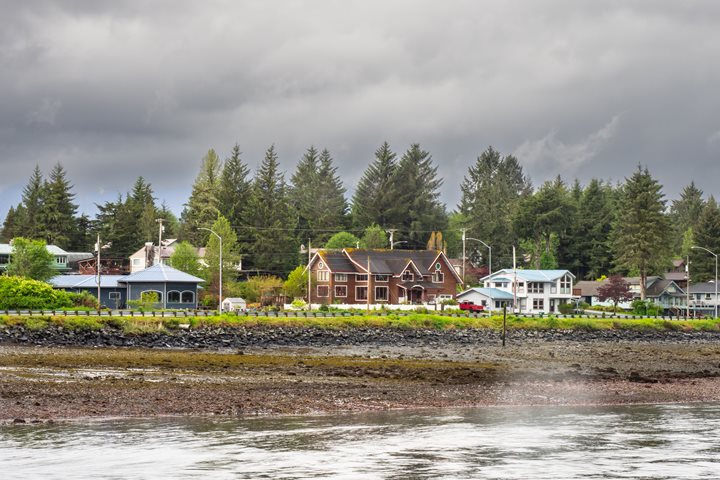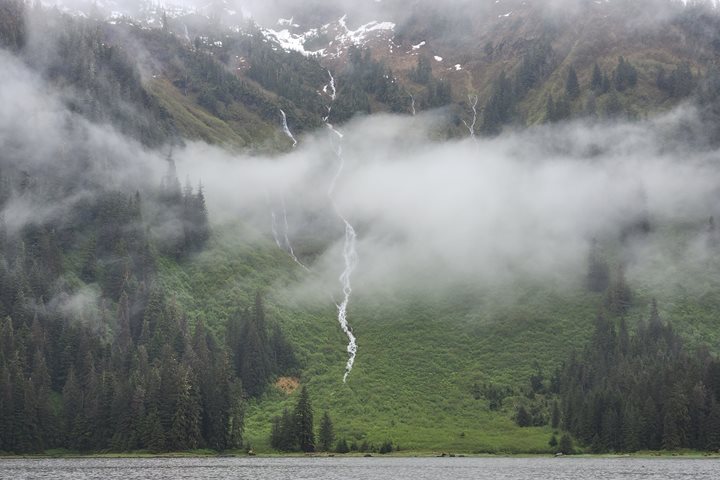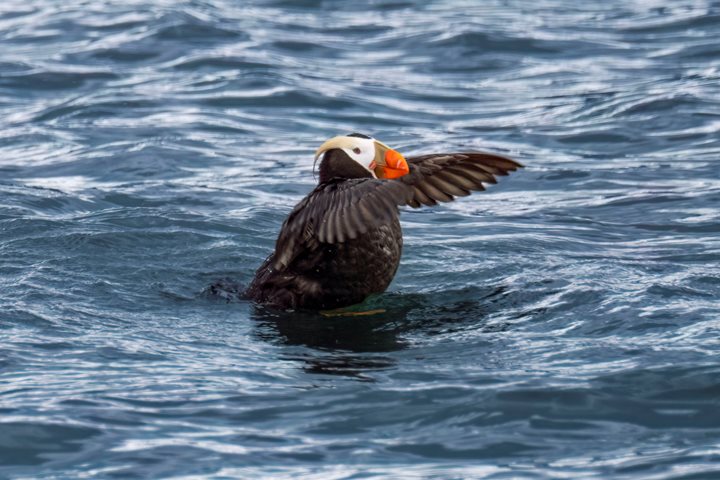At 6 o’clock this morning, we woke to a magnificent scene—Margerie Glacier one quarter of a mile ahead of the ship, and the Grand Pacific Glacier off our starboard side. We stood on the bow holding warm cups of coffee, gazing at the masses of ice before us. George Vancouver had mapped the region in 1791, but he missed this bay for good reason—it didn’t yet exist. At that time, the Grand Pacific Glacier extended 65 miles further south. Since then the massive glacier has retreated, and now there is a fresh landscape of U-shaped valleys, rounded mountains, polished rock walls, streams, and alluvial fans. Plant life returns, but slowly, and in stages: first there are lichens, then a succession of pioneer plants, alders, and eventually spruce trees. We saw brown bears near the water and mountain goats grazing on high alpine meadows. Marine birds were abundant today: kittiwakes, glaucous-winged gulls, common murres, tufted puffins, pelagic cormorants, and thousands of scoters. Sea otters surfaced near the ship, harbor seals rested on bergy bits, and Steller sea lions grumbled at one another as they crowded on small rock ledges. Glacier Bay is a raw and beautiful landscape, and a habitat that is still evolving as ice continues to retreat.
- Daily Expedition Reports
- 31 Aug 2018
Glacier Bay National Park, 8/31/2018, National Geographic Quest
- Aboard the National Geographic Quest
- Alaska
Berit Solstad, Naturalist
Berit grew up on the rocky shores of Marblehead, Massachusetts, where she explored the marine environment through changing tides and seasons, nurturing a love of natural history and marine biology.
Read MoreShare Report
Alaska's Inside Passage
VIEW ITINERARYRelated Reports
5/28/2025
Read
National Geographic Venture
Kelp Bay
Southeast Alaska’s rainforest was verdant in the morning rain. Small whitecaps textured the surface of the sea as we searched for marine life. Then, ahead in the distance, a big splash. Then another splash, followed by another. The bridge team expertly moved our ship closer. The young humpback whale had unlimited energy for throwing itself out of the water and flopping back in. We watched this youngster breach over and over until we needed to be on our way. Our next off-vessel excursion was on Baranof Island in Kelp Bay. Bushwhackers and moderate hikers passed along animal trails, climbing through Sitka spruces and western hemlocks. Giant bear’s bread fungus sprouted from downed trees. Delicate flowers, including Jeffrey Shooting Stars, decorated the path. We made our way to the boggy muskeg where few trees survive the wet environment. Streams of snowmelt and raindrops were occasionally blocked by the busy work of beavers. The forest was quiet and warm while hardy Zodiac cruisers toured the shoreline to view waterfalls and gulls hitching a ride on a floating log. Once back on board, we felt the warm comfort of the ship and came to realize that in just a few days, National Geographic Venture has come to feel like home.
5/27/2025
Read
National Geographic Quest
Glacier Bay National Park
A nice morning that only got better and prettier and sunnier! Truly a gift to bring guests here to witness the scale and diversity of ice and wildlife. South Marble Island had so many tufted puffins, and a few unexpected horned puffins, with sea lions and humpback whales galore. During lunch, we cruised up towards Margerie Glacier to view the impressive glacier and look for Arctic terns. Afterwards, we went past Gloomy Knob and saw mountain goats, looked for wildlife at Russel Cut (saw an osprey!), and ended the day with a stunning colorful sunset with an abundance of whales!







